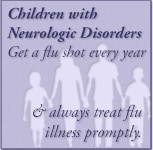Health Needs and Use of Services Among Children with Developmental Disabilities
Children with developmental disabilities (DD) often have increased needs for health care and services. Understanding how common DD are in US children can help to inform strategies for optimal health outcomes.

1 in 6 children ages 3 through 17 years of age has one or more developmental disabilities.
Developmental delays, disorders, or disabilities are common among US children and often co-occur
A recent Centers for Disease Control and Prevention (CDC) study found that 17.3% of US children between the ages of 3 and 17 had at least one developmental disability (DD). This is similar to a previously determined rate of 17.8%.1 This new study also found that 6.7% of US children had two or more DDs.
Children with DD have increased health care and service needs
US children with DD were found to be more likely to have limited abilities, such as limited movement or play abilities, and/or service needs, including special equipment and home health care, than children without a DD. Children with DD were 18 times as likely to utilize services such as special education or early intervention (EI). Children with DD were two to seven times more likely than those without a DD to utilize health-related services such as
- Prescription medication
- Mental health professionals, medical specialists, or special therapists (occupational, physical)
Sociodemographic differences are seen in health care and service use
Among children with DD, use of health and specialty services varied across socio-demographic groups. More non-Hispanic white children with DD took prescription medication compared to non-Hispanic Black, non-Hispanic other, and Hispanic children with DD. Additionally, Hispanic children with DD were less likely to see a mental health professional, and non-Hispanic black and Hispanic children were less likely to see a medical specialist as compared to non-Hispanic white children with DD.

Age also played a role in use of services, with younger children with DD needing special equipment or help with personal care more often than older children. Children with DD older than nine were more likely to take prescription medication and/or see a healthcare professional than younger children.
Children with DD who were living in poverty were also less likely to see a medical specialist and more likely to receive special education or EI compared to those not living in poverty. Receiving healthcare and education services was lower in children with DD who did not have health insurance.
Conclusion
As this study highlights, DD are common among US children and often occur together. Children with DD have greater health needs and a higher need for services than those without DD. Early identification and coordination of services could be instrumental to improve the health of children with DD and decrease their overall need for health-related services later in life.
A further look at the inequities by socio-demographic subgroups is needed to help inform the development and implementation of strategies to promote health equity and ensure all children with DD have equal access to the care they need and deserve.

- Health Status and Health Care Use Among Adolescents Identified With and Without Autism in Early Childhood: An Easy-Read Summary
- Free Materials on Developmental Disabilities
- Information on Autism Spectrum Disorder for Families
This website has tools and information about autism spectrum disorder (ASD) for families. - Get Free “Learn the Signs. Act Early.” Materials
The free Parent Resource Kit contains information on developmental milestones by age (2 months to 5 years), developmental screening, and a growth chart.
References
- Zablotsky B, Black LI, Maenner MJ, Schieve LA, Danielson ML, Bitsko RH, Blumberg SJ, Kogan MD, Boyle CA. Prevalence and Trends of Developmental Disabilities among Children in the US: 2009–2017. Pediatrics. 2019; 144(4):e20190811.
MMWR Reference
Cogswell ME, Coil E, Tian LH, et.al.Health Needs and Use of Services Among Children with Developmental Disabilities, United States, 2014–2018. MMWR Morb Mortal Wkly Rep 2022;71:453-458.
